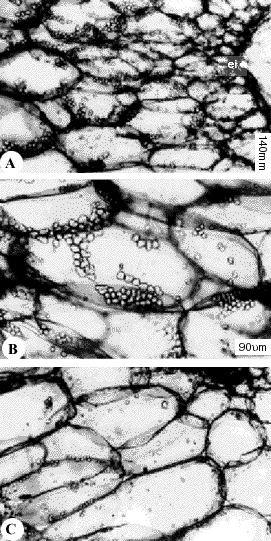The objective of the present work was to observe anatomical and morphological aspects of fruits of Lycopersicon esculentum Mill.`Ângela Gigante', treated with plant growth regulators. Two assays were carried out in the greenhouse: (1) in the first, the seedlings were selected and transferred to 12 L capacity pots, containing a mixture of clayey soil, sand, organic matter and a complementary N, P, K mineral fertilizing; (2) in the second, after the seedling transfer, besides the N, P, K fertilizing, a supplementary fertirrigation was carried out. In both assays after the plants had developed four mature leaves, they were pulverized with GA3 50 mg/L; NAA 100 mg/L; CCC 1,500 mg/L and SADH 3,000 mg/L. The treatments with growth retardants (CCC and SADH) produced firm fruits, although in cross sections, viscosity loss and seed atrophy were observed in fruits of plants treated with SADH. Plants treated with NAA and GA3 showed the formation of fused fruits. The treatment with GA3 revealed starch grain in process of fragmentation in the parenchyma of the pericarp. The treatment with GA3 probably accelerated the process of ripening, transforming starch to sugars. Cells with crystal calcium oxalate in the mesocarp as a crystalline sand were observed. The treatment of CCC formed juicy fruits with degenerated placenta cells, liberating great amounts of mucilage. The pericarp showed great amounts of compound starch grain, probably due to retardation in fruit ripening.
tomato plant; Lycopersicon esculentum Mill.; anatomy; morphology; bioregulators












